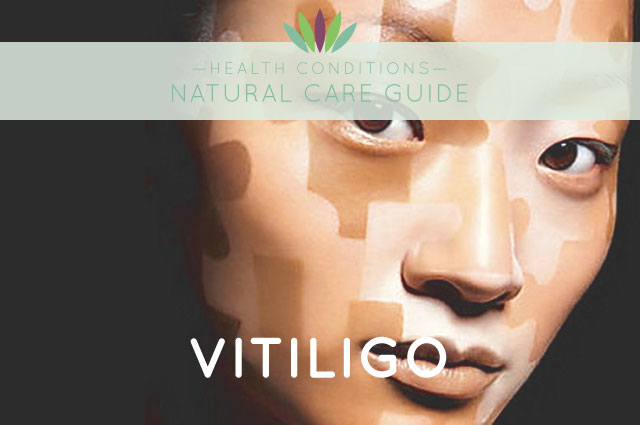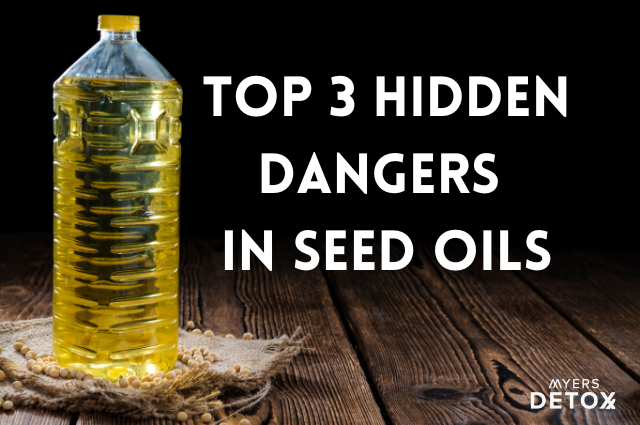Vitiligo (aka leukoderma) is an autoimmune skin disease in which the absence of melanocytes (pigment-producing cells) cause a decreased pigmentation (coloration) in the skin. Learn about natural approaches to healing this autoimmune disorder.
In the United States, 1 to 2 million people have the disorder. Most people with vitiligo develop it before their 40th birthday. The disorder affects all races and both sexes equally. Vitiligo is temporary in one-third of those diagnosed with it.
Vitiligo is localized in one particular area, or generalized, affecting the body more broadly. Generalized vitiligo is more common. Vitiligo strikes the face, neck, and scalp. Other common areas are the elbows, knees, ankles, shoulders, and other bony areas: the forearms, wrists, hands, and fingers: and body orifices such as the lips, genitals, gums, and nipples. Vitiligo can show up us a patch or streak of white or gray hair on the scalp, or, in some cases, it can turn all the scalp hair white or gray. Vitiligo can affect eyebrow, pubic, and underarm hair.
Causes
Doctors and scientists have theories about what causes vitiligo, an immune system disorder. The following list can give you insight as to what may have caused your vitiligo and how to prevent it from getting worse.
- Can be triggered by viral infections, particularly Epstein-Barr virus/mononucleosis.
- Leaky Gut. It is speculated that one must have a leaky gut in order to develop an autoimmune condition.
- Having contracted Coxsackie groups A and B viruses.
- Heredity, or incidence of vitiligo running in families, occurs in 30% of patients.
- A single event, such as sunburn or emotional distress that triggered the condition.
- Unusual trauma, especially to the head.
- Sometimes pigment loss can occur in someone who’s had a melanoma, a malignancy of the cells that produce melanin (melanocytes).
- Mercury or gold fillings are a risk factor and trigger for all autoimmune diseases.
- Gluten/grain sensitivity is a risk factor for all autoimmune diseases. Since 50% of people have a sensitivity or allergy to gluten, it is best avoided. For more information, see my article Food Sensitivities Make You Sick and Fat.
- Allergies. Allergies to foods, etc stimulate the immune system and can trigger autoimmune conditions. Be sure to get allergens tested every year as they are subject to change.
- Overconsumption of processed foods.
- Little or no fish oil in the diet.
- Low-protein diet. You should consume 10-30% protein depending upon your individual needs. Vegan diets are not recommended for people with vitiligo.
- Overconsumption of sugar.
- Not getting enough sleep. This is a general risk factor for low immune function, which adds to the risk of developing an autoimmune disease.
- Periodontal disease increases risk of all autoimmune disorders. Be sure to get your teeth cleaned every six months!
- Smoking. This is a general risk factor for low immune function, which adds to the risk of developing an autoimmune disease.
- Chronic physical stress.
- Chronic emotional stress.
- Dehydration. Chronic dehydration is a general risk factor for low immune function and autoimmune diseases in general. Dehydration adds to the risk of developing an autoimmune disease. For more information, see my article Dehydration Causes Pain and Disease.
- If you have one autoimmune disorder, you’re susceptible to developing another one.
Risks of Vitiligo
Vitiligo can also be a warning sign for future development of other autoimmune conditions. You may need a blood test to check the health of your thyroid gland. People who have vitiligo often have autoimmune thyroid disease. A blood test will tell whether your thyroid is healthy. If you have thyroid disease, treatment can successfully control it.
Anyone who has vitiligo should be knowledgeable of the following condition’s symptoms so they can pursue treatment if they occur, especially hypothyroidism and diabetes.
- Hypothyroidism (a under active thyroid, specifically, Hashimoto’s, or autoimmune thyroid disease)
- Hyperthyroidism (an overactive thyroid)
- Diabetes (Type 2)
- Addison’s disease (a disease that causes decreased adrenal gland function)
- Alopecia (autoimmune hair loss)
- Pernicious anemia (vitamin B12 deficiency)
Cosmetics:
- Cosmetics can safely add color to your skin if you want to add color without undergoing treatment. Cosmetics that can add color are self-tanners, dyes, and makeup.
- Select a waterproof product.
- Self-tanners and dyes last longer than makeup.
- Dyes work best for white spots.
- When looking for a self-tanner, choose a product that contains dihydroxyacetone.
- With practice, most people can achieve a natural look with a concealing cream or self-tanner.
- Often recommended for children because it avoids possible side effects from medicine.
Sun Protection:
- Skin that has lost its color sunburns very easily.
- A bad sunburn can worsen vitiligo.
- If you have fair skin, avoiding a tan usually makes the vitiligo barely noticeable.
- If you chose to treat vitiligo with depigmentation, that is removing the remaining color from your skin, the sun can cause spots of color to form on your skin. You will need to depigment your skin again to remove these spots of color.
Use sunscreen:
- Generously apply sunscreen to skin that is not covered by clothing.
- UVA/UVB protection (label may say “broad spectrum”).
- A sun protection factor (SPF) of 30 or more.
- Water-resistant.
- Be sure to apply at least 30 minutes before going outdoors if using a chemical sunscreen. Mineral sunscreens protect immediately.
- Reapply sunscreen every 2 hours when outdoors, even on cloudy days.
- Reapply sunscreen after being in water or sweating.
Wear clothing that protects your skin from the sun:
- Skin covered by clothing that has a high SPF does not need sunscreen. Not all clothing offers high SPF. A long-sleeve denim shirt has an SPF of about 1,700. A white t-shirt only has an SPF 7, and a green t-shirt has about an SPF 10.
Nutritional Therapy and Supplements
- Improving overall diet will improve the strength of the immune system and improve symptoms. It is important to nourish and strengthen the tissue under attack, the skin. I recommend the Modern Paleo diet to completely nourish the body.
- Vitiligo is the result of nutritional deficiencies, especially folic acid and vitamin B12. A complete Myers Detox Protocol will give you all the nutrients your body needs to heal this autoimmune condition.
- Other suspected deficiencies include para-amino-benzoic acid (PABA), tyrosine, and copper.
- There is a clear link between vitiligo and low stomach acid. Many patients benefit by supplementing with hydrochloric acid plus pepsin before meals. Low hydrochloric acid results in low B12 levels. Low stomach acid can be caused by Adrenal Fatigue.
- Fish oil supplementation of 2000-4000mg a day can reduce inflammation and nourish the skin. A great EPA-DHA fish oil supplement from small fish can be found in the Myers Detox Store.
- Results from a clinical trial indicate that the herb, ginkgo biloba, may restore skin color and stop vitiligo from worsening. In the ginkgo biloba trial, 10 patients given ginkgo biloba had noticeable or complete return of skin color. Two patients taking the placebo (contains no active ingredient) also had noticeable or complete return of skin color.
Alternative Therapies
- There are many alternative therapies that should serve as a compliment or alternative to conventional treatments. Autoimmune patients do better when they have a team of practitioners from a variety of fields. Explore lots of disciplines for your wellness team.
- Most people who have reported remission or improvement of their symptoms have one thing in common — they have combined conventional treatments with comprehensive herbalism. Very good results for autoimmune patients can be found with a master herbalist of the western herbal school, Ayurveda, Traditional Chinese Medicine, or a combination of all three. Find an herbalist who is a member of the American Herbalist Guild.
- Exercise (e.g. yoga, pilates, gyrotonics, tai chi, walking, biking, sports, etc)
- Acupuncture
- Healing Therapies (e.g. massage, reiki, Body Restoration Technique, osteopathic manipulation)
- Relaxation/Spirituality/Mind-Body (e.g. prayer, meditation, breathing, guided imagery)
Reduce Toxins and Triggers
- One of the best ways to reduce toxins in your system that are flaring up your immune system are near infrared saunas. One hundred thousand chemicals have been unleashed into our environment in the form of dumping and use in manufacturing. According to the Environmental Protection Agency (EPA), a person has 700 chemicals on average in their body, including rocket fuel and pesticides, with the most plentiful being phthalates, found in perfumed and colored personal care products. One can easily sweat these chemicals out of the body. Clearly, chemicals are going to contribute to any health condition, including vitiligo. You can find many types of infrared saunas for any budget in the Myers Detox Store.
- Autoimmune diseases can be accompanied by allergies. Allergy testing is recommended so you can avoid allergens that may tax the immune system. Common allergies include soy, corn, dairy, and gluten. Most people with autoimmune issues must avoid gluten. You can also do an elimination diet if you can’t afford allergy testing with a physician. For more information, see my article on Food Sensitivities.
- Chemical sensitivities that can trigger autoimmune symptom or disease include typical household cleaners (go natural), typical cosmetics and toiletries, and exposure to industrial chemicals. Household cleaners are far more toxic than people realize. Most cosmetics and toiletries contain petroleum by-products that contain heavy metals and estrogenic preservatives. The body absorbs anything that is applied to or touches the skin. For more information, see my article Reduce Your Exposure to Cancer-causing Agents.
- Avoid conventional produce, which is full of pesticides, and eat organic. Conventional produce is constantly contaminated with raw manure and bacteria that can trigger an autoimmune reaction. Organic standards do not allow raw manure to be used as fertilizer.
- Avoid conventionally raised meats, which are full of hormones and antibiotics and GMO feed, and eat organic, grass-fed meats and eggs.
- Periodontal disease, a chronic mouth infection, can trigger autoimmune disease. Be sure to get your teeth cleaned every six months to avoid developing this bacterial disease.
- Smoking increases risk and severity of autoimmune disease.
- Mercury or gold fillings increase the risk of autoimmune diseases.
- Drink spring water. Tap water and even many filtered bottled waters are contaminated with fluoride, perchlorate, chlorine, and many, many toxins that can trigger an autoimmune reaction or disease. My favorite is Mountain Valley Spring Water. For more information, see my articles Dehydration Causes Pain and Disease and What Kind of Water Should I Drink?
Conventional Medicine Only Manages Vitiligo
Topical Medicines
- Several different topical medicines (applied to the skin) can repigment the skin.
- Prescribed for small areas.
- The most commonly prescribed medicine is a potent or super-potent topical corticosteroid. About half, 45 percent, of patients, regain at least some skin color after 4 to 6 months.
- Topical medicine works best in people with darkly pigmented skin.
- Topical medicines are most effective in certain areas of the body, such as the face. They are least effective on the hands and feet.
- Not all topical medicines should be used on the face.
- Drawbacks: These medicines have possible side effects, so patients must be carefully monitored. A possible serious side effect of using of a topical corticosteroid for a year or longer is skin atrophy. This means the skin becomes paper-thin, very dry and fragile.
Light Treatment
- Uses light to repigment the skin.
- The patient may sit in a lightbox or receive excimer laser treatments.
- Light box used to treat widespread vitiligo; laser used to treat small area.
- Works best on the face; least effective on hands and feet.
- Effective for many patients; about 70 percent see results with an excimer laser.
- Results can disappear. About half, 44 percent, see results disappear within 1 year of stopping treatment. After 4 years, about 86 percent lose some color restored by treatment.
- May cause patients with darkly pigmented skin to see areas of darker skin after treatment, but treated skin usually matches untreated skin within a few months.
- Requires a time commitment. Patients need 2 to 3 treatments per week for several weeks.
- May be combined with another treatment such as the topical corticosteroid.
PUVA Light Therapy
- Uses UVA light and a medicine called psoralen to restore skin color.
- Psoralen may be applied to the skin or taken as a pill.
- Can treat widespread vitiligo.
- About 50 percent to 75 percent effective in restoring pigment to the face, trunk, upper arms and upper legs.
- Not very effective for the hands or feet.
- Time-consuming, requiring treatment at a hospital or PUVA center twice a week for about 1 year.
- Psoralen can affect the eyes, so this treatment requires eye exams before starting treatment and after finishing treatment.
- To help prevent serious side effects, patients need to be carefully monitored.
Surgery
- Maybe an option when light therapy and medicines applied to the skin do not work.
- For adults whose vitiligo has been stable (not changed) for at least 6 months.
- Not for children.
- Not for people who scar easily or develop keloids (scars that rise above the skin).
- Different surgical procedures available. Most involve removing unaffected skin or skin cells and placing where need pigment.
- Can be effective for 90 percent to 95 percent of patients.
- Possible side effects include failure to work, cobblestone-like skin and infection.
Depigmentation
- This treatment removes the remaining pigment from the skin.
- Very few patients opt for this treatment.
- Removing the rest of the pigment leaves a person with completely white skin.
- It may be an option for an adult who has little pigment left and other treatment has not worked. Removing the remaining pigment can be an effective way to get one skin color.
- To remove the remaining color requires you to apply a cream once or twice day. This cream gradually removes color from the skin.
- Depigmentation can take 1 to 4 years.
- Once treatment is finished, some people see spots of pigment on their skin from being out in the sun. To get rid of these spots, you can use the cream that removed your remaining skin color.
Vitiligo Don’ts
- Do not get a tattoo. Getting a tattoo can cause Keobnerization or the Koebner phenomenon. What this means is when you wound your skin, which getting a tattoo does, a new patch of vitiligo can appear about 10 to 14 days later.
- Do not use tanning beds and sun lamps. These are not safe alternatives to the sun. These, too, can burn skin that has lost pigment.
Support
Message boards for major cities, local support groups that meet monthly giving you the opportunity to meet others living with vitiligo, and the chance to share support and experiences in person.
An online community where people living with vitiligo, their family, and their friends can share information and stay in touch. Can meet people worldwide.
Discussions and articles on the Daily Strength website.
- American Vitiligo Research Foundation
- Vitiligo Society
Do you have a story about Vitiligo? Have you healed yourself from Vitiligo? Have treatment suggestions? I want to hear about it! Tell me your story by leaving a comment below.
This material is for educational purposes only. The preceding statements have not been evaluated by the Food and Drug Administration. This information is not intended to diagnose, treat, cure or prevent any disease.









